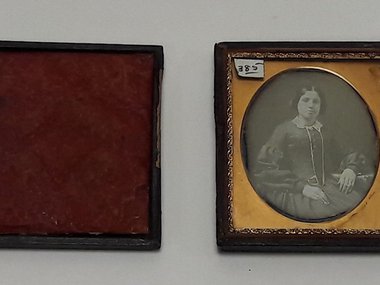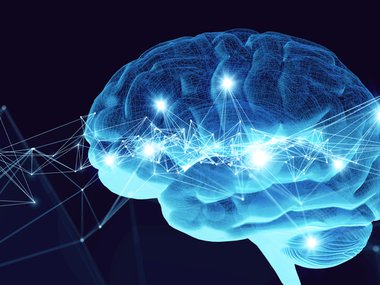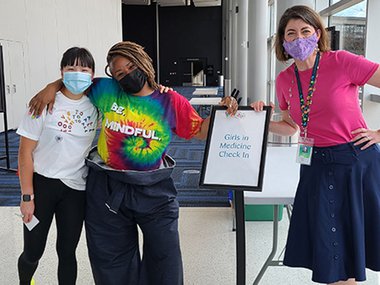As part of the Museum’s programming related to the Mental Health: Mind Matters touring exhibition, we are hosting a complementary exhibit featuring a variety of art created by people with mental illness or about mental illnesses. On display through May 30, Creative Arts Therapies features dozens of pieces of visual and performing art, such as music, ceramics, photographs, and paintings to name a few.
The Museum worked with a number of community partners to curate the loaned pieces, including the Autism Society of Central Virginia, Side by Side, the Virginia Art Therapy Association, the National Alliance on Mental Illness Virginia, Healing Sounds, the U.S. Department of Veterans Affairs, Art for the Journey, the Central Virginia Veterans Affairs Healthcare System, the Virginia Department of Behavioral Health and Developmental Services, Stonewear Ceramics, and RADAR.
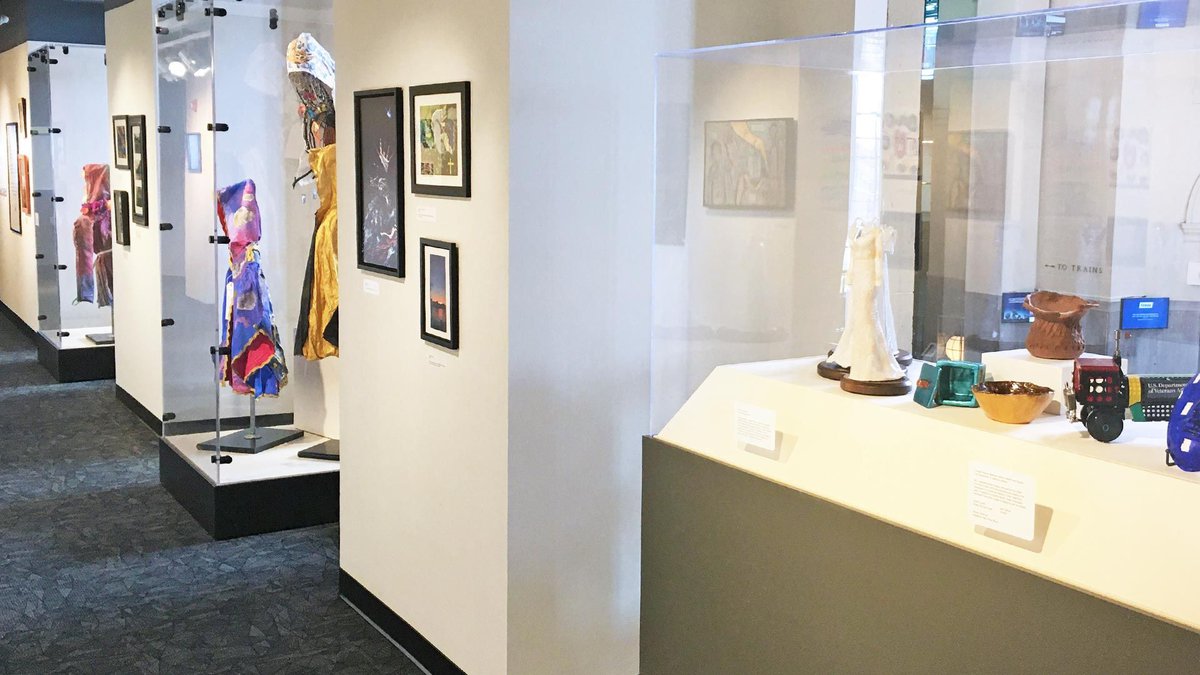
Various forms of art have long been celebrated for their healing qualities. Beginning in the 1940s, mental health professionals began incorporating art into therapeutic settings. Since that time, art therapy has been used in the treatment of many mental health challenges, studied extensively, and formalized in professional mental health training.
When exploring the connection between, and role of, art and mental illness treatments, it’s important to understand the difference between art therapy and art as a therapeutic approach.
Art Therapy
There is often confusion, and sometimes unintentional misuse, when applying the term art therapy to general therapeutic pursuits. Art, or any creative process, taken up by an individual may be therapeutic but it is not necessarily clinical therapy.
Art therapy emerged in the mid-20th century and gained formal structure and training through influences from psychiatrists, psychologists, educators, and artists. Adrian Hill, who coined the term “art therapy,” recognized the power of art while recovering from tuberculosis. Stunned by the benefit of self-expression to his own health, he promoted the practice to others, first to other patients with tuberculosis and then more widely in his 1945 book, Art Versus Illness.
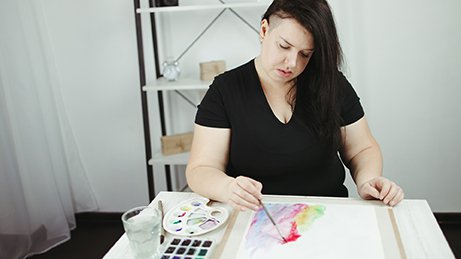
Image credit: Getty Images
Psychologist Margaret Naumburg, America’s “mother of art therapy,” began referring to her work as art therapy around the same time period. Naumburg valued art for its symbolic meaning, or its ability to reveal the emotions and thoughts of its creator. Today’s art therapy often combines the elements of self-expression celebrated by Hill with symbolic interpretation emphasized by Naumburg.
Art therapy requires the work and guidance of an accredited and board-certified art therapist. The art therapist incorporates art and other creative pursuits into the individual’s treatment to provide a more holistic plan that focuses on mind, body, and spirit. Typically, this work is done in conjunction with other therapy/therapists and becomes a part of a greater, overarching treatment plan.
Art therapy is often offered to individuals, family members, and couples with diagnosed mental illness or health issues. It can also be used by individuals with a desire for “emotional, spiritual, or creative growth.” According to the American Art Therapy Association, art therapy is used to contribute to a number of positive outcomes, including:
- Improving cognitive, sensory, and motor functions.
- Fostering self-esteem and self-awareness.
- Cultivating emotional resilience.
- Promoting insight.
- Enhancing social skills.
- Reducing and resolving conflicts and distress.
- Advancing societal and ecological change.
Over the past two decades, as biological and neuroscientific research has emerged supporting mindfulness-based therapy, the field of art therapy has shifted some to focus on training and implementation of mindfulness based art therapy (MBAT). This is an area of exciting and innovative scientific study.
Art as a Therapeutic Approach to Wellness
A key difference between art therapy and art as a therapeutic approach is the latter is generally self-prescribed and self-directed. Even in the absence of the formal art therapy process, however, art brings many benefits to the mind, body and brain, providing means of self-expression, communication, decision making, creativity, and stress reduction.
Individuals can practice more sedentary arts, such as painting, ceramics, drawing, writing, doodling, and coloring, as well as more movement-based or kinetic arts like dance and martial arts. Music - both in creation and listening - seems to have a multitude of effects on the mind and is an active topic for research. All these arts activities may have therapeutic benefits, even if they are not technically art therapy overseen by a clinician.
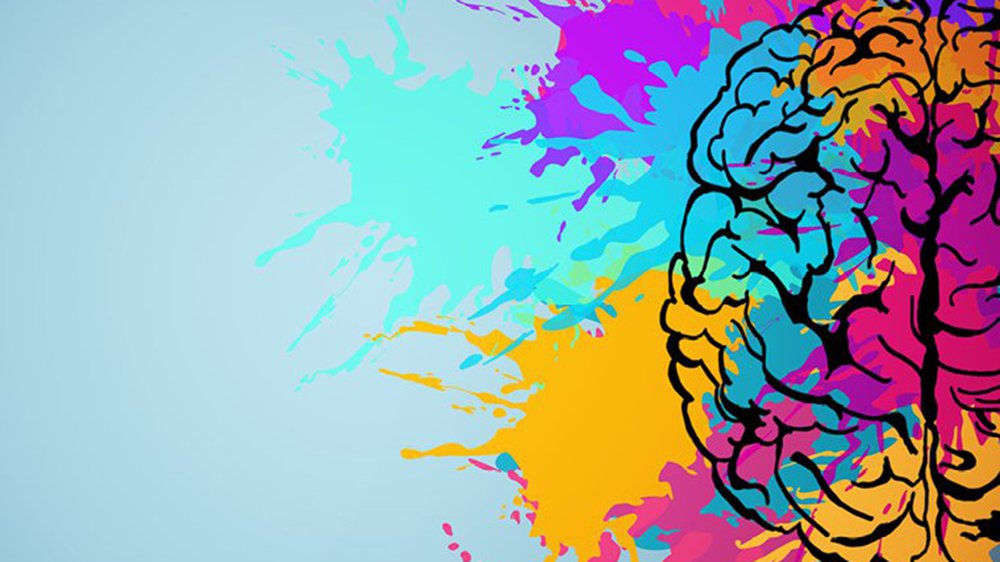
Some of the therapeutic benefits of artistic endeavors can be through meditative practice. Through practice and training, participants may achieve “flow,” a state of concentration so focused that it amounts to absolute absorption in an activity. Also called “being in the zone,” by focusing only on the task at hand, this state may help an individual reduce self-consciousness and anxiety. Achieving flow is often a challenge to the brain, and flow states are an area of study in neuroscience. Many people who find traditional meditation difficult are able to achieve this state through the practice of an art-related activity.
As we consider ways to balance our mental wellbeing with the many demands on our time and resources, it is important to remember that hobbies are good for our mental health.
Art is not only a tool to work toward wellness, but creative expressions of the mind can provide windows into the human condition. The psychiatric branch of the American Medical Association has compiled artwork and essays that explore the “role of the visual arts in representing truths about mental health, coping with illness, trauma and conflict, addressing social stigma, and enriching society's understanding of mental illness.”
The new Creative Arts Therapies exhibition at the Museum can serve as a similar window into the human condition, inspiring all of us to better understand the human mind and consider our relationships with mental health.
